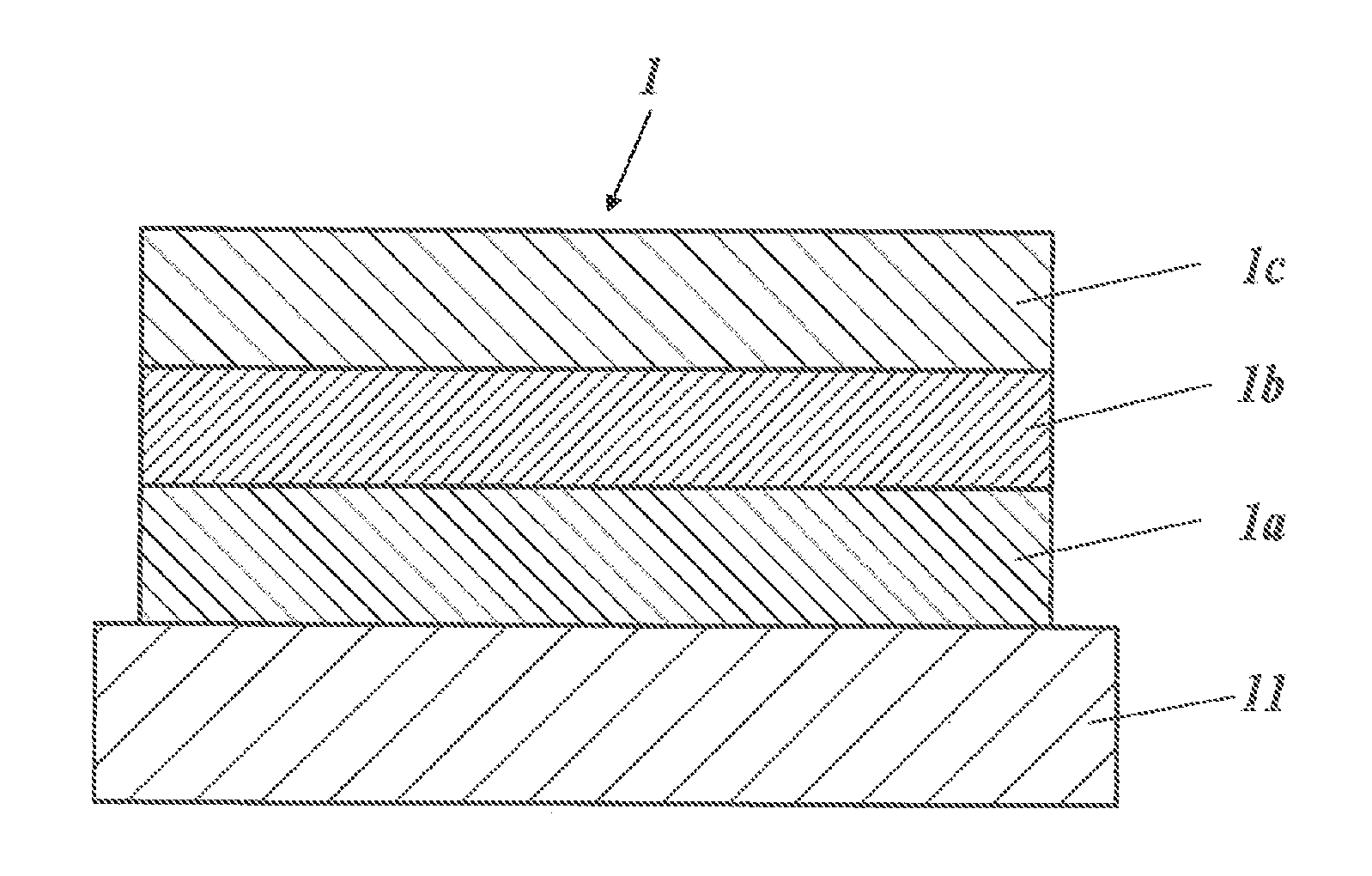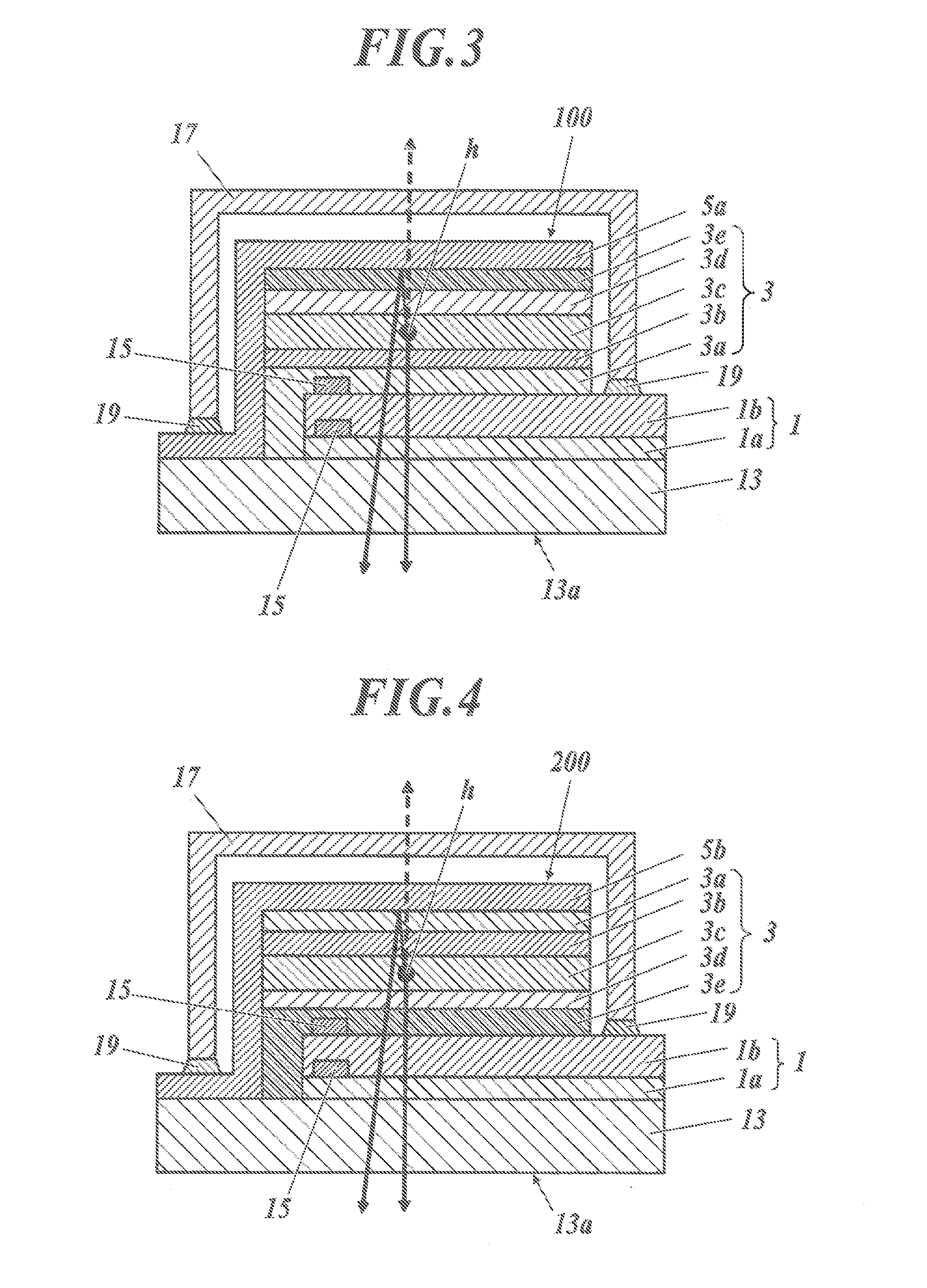Transparent electrode, electronic device, and organic electroluminescent element
- Summary
- Abstract
- Description
- Claims
- Application Information
AI Technical Summary
Benefits of technology
Problems solved by technology
Method used
Image
Examples
examples
[0371]Hereinafter, the present invention is detailed with Examples. However, the present invention is not limited thereto. Note that “%” used in Examples stands for “mass % (percent by mass)” unless otherwise specified.
[0372]>
[0373]By the method described below, transparent electrodes 1 to 63 were each produced in such a way that the area of a conductive region was 5 cm×5 cm. The transparent electrodes 1 to 4 were each produced as a transparent electrode having a single-layer structure, and the transparent electrodes 5 to 63 were each produced as a transparent electrode having a multilayer structure of an intermediate layer(s) and a conductive layer.
[0374][Production of Transparent Electrode 1]
[0375]By the method described below, the transparent electrode 1 having a single-layer structure was produced as a comparative example.
[0376]A base composed of transparent alkali-free glass was fixed to a base holder of a commercial vacuum deposition device, and the base holder was mounted in ...
second example
Production of Luminescent Panels
[0414][Production of Luminescent Panel 1]
[0415]A top-and-bottom emission type luminescent panel 1 having the structure (but having no intermediate layer 1a) shown in FIG. 7 was produced through the procedure described below by using, as an anode, the transparent electrode 1 produced in First Example.
[0416]First, a transparent substrate 13 having the transparent electrode 1 formed of only the conductive layer 1b produced in First Example was fixed to a substrate holder of a commercial vacuum deposition device, and a vapor deposition mask was disposed in such a way as to face a formation face of the transparent electrode 1 (conductive layer 1b only). Further, heating boats in the vacuum deposition device were filled with materials for respective layers constituting a light-emitting functional layer 3 at their respective amounts optimal to form the layers. The heating boats used were composed of a tungsten material for resistance heating.
[0417]Next, the ...
PUM
| Property | Measurement | Unit |
|---|---|---|
| Electrical resistance | aaaaa | aaaaa |
| Nanoscale particle size | aaaaa | aaaaa |
| Transmittivity | aaaaa | aaaaa |
Abstract
Description
Claims
Application Information
 Login to View More
Login to View More - R&D
- Intellectual Property
- Life Sciences
- Materials
- Tech Scout
- Unparalleled Data Quality
- Higher Quality Content
- 60% Fewer Hallucinations
Browse by: Latest US Patents, China's latest patents, Technical Efficacy Thesaurus, Application Domain, Technology Topic, Popular Technical Reports.
© 2025 PatSnap. All rights reserved.Legal|Privacy policy|Modern Slavery Act Transparency Statement|Sitemap|About US| Contact US: help@patsnap.com



